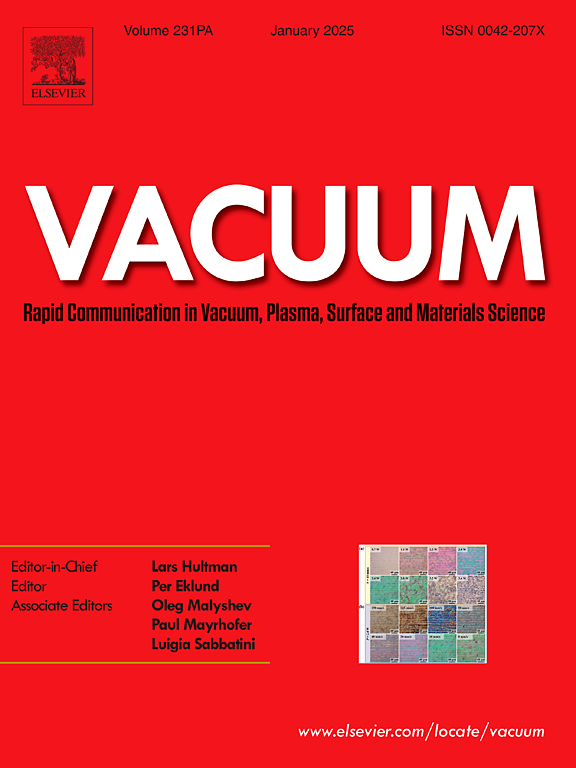In situ XPS analysis of surface transformations in activated Ti-Zr-V thin films by nitrogen venting
IF 3.8
2区 材料科学
Q2 MATERIALS SCIENCE, MULTIDISCIPLINARY
引用次数: 0
Abstract
Non-evaporable getter (NEG) films have become critical for fourth-generation diffraction-limited storage ring vacuum systems. Repeated venting-activation cycles lead to reduced pumping performance and saturation of the film's absorptive capacity; therefore, it is necessary to minimize the number of activations by protecting or storing the film. In this study, NEG films were deposited on oxygen-free copper substrates using pulsed magnetron sputtering. The microstructure, surface morphology, and phase composition were analyzed. The X-ray photoelectron spectroscopy was employed to investigate the activation characteristics and the evolution of the chemical valence states of the NEG film's surface before and after nitrogen venting. The results indicate that the activated films form oxides and nitrides following initial nitrogen venting at room temperature. Compared to oxygen molecules, the reaction of the film with nitrogen molecules is insufficient, resulting in the formation of only a small quantity of nitrides. After nitrogen venting, the surface of the activated films retains a high proportion of zero-valent metals, exhibiting numerous active surface sites. An extended nitrogen venting period did not lead to a significant increase in oxide and nitride content, indicating that the film had not deteriorated further. These findings suggest the potential use of nitrogen for film protection and storage.
求助全文
约1分钟内获得全文
求助全文
来源期刊

Vacuum
工程技术-材料科学:综合
CiteScore
6.80
自引率
17.50%
发文量
0
审稿时长
34 days
期刊介绍:
Vacuum is an international rapid publications journal with a focus on short communication. All papers are peer-reviewed, with the review process for short communication geared towards very fast turnaround times. The journal also published full research papers, thematic issues and selected papers from leading conferences.
A report in Vacuum should represent a major advance in an area that involves a controlled environment at pressures of one atmosphere or below.
The scope of the journal includes:
1. Vacuum; original developments in vacuum pumping and instrumentation, vacuum measurement, vacuum gas dynamics, gas-surface interactions, surface treatment for UHV applications and low outgassing, vacuum melting, sintering, and vacuum metrology. Technology and solutions for large-scale facilities (e.g., particle accelerators and fusion devices). New instrumentation ( e.g., detectors and electron microscopes).
2. Plasma science; advances in PVD, CVD, plasma-assisted CVD, ion sources, deposition processes and analysis.
3. Surface science; surface engineering, surface chemistry, surface analysis, crystal growth, ion-surface interactions and etching, nanometer-scale processing, surface modification.
4. Materials science; novel functional or structural materials. Metals, ceramics, and polymers. Experiments, simulations, and modelling for understanding structure-property relationships. Thin films and coatings. Nanostructures and ion implantation.
 求助内容:
求助内容: 应助结果提醒方式:
应助结果提醒方式:


